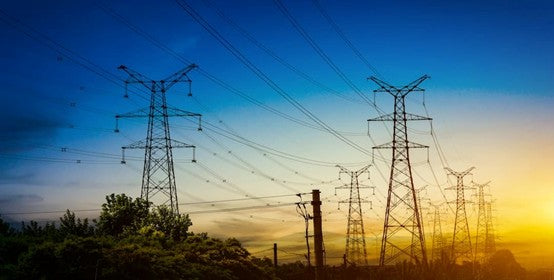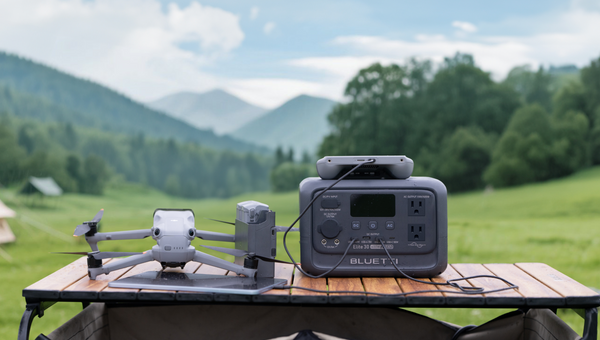Your cart is empty
Shop our productsAs the residents of Redwood City grapple with frequent and lengthy power outages, understanding how and why to track these outages is essential to mitigate their effects. With more households relying on electricity than ever before, it is critical to know when and where these outages occur, to both prepare and protect ourselves from any potential damage. This article will explore why tracking power outages is important and how to go about doing so.
Power Outage Near Redwood County, Minnesota
|
Area |
% of power outage |
Number of outages reported |
Number of customers tracked |
|
Kanabec County, MN |
1.2 |
59 |
4,784 |
|
Redwood County, MN |
0.7 |
12 |
1,695 |
|
Nicollet County, MN |
0.5 |
40 |
7,308 |
|
Clay County, MN |
0.4 |
21 |
5,656 |
|
Washington County, MN |
0.1 |
74 |
122,929 |
|
Hennepin County, MN |
0.0 |
91 |
640,937 |
|
Ramsey County, MN |
0.0 |
47 |
253,617 |
|
Stearns County, MN |
0.0 |
14 |
71,126 |
Are power outages common in Minnesota?
Power outages are not an uncommon occurrence in Minnesota. According to a report released by the Minnesota Department of Commerce, from 2010 to 2014 there have been over 63,000 power outages statewide.
Power outages in Minnesota are caused by a variety of different sources. These include inclement weather, such as high winds and lightning storms, and animal interference, which accounts for at least 24 percent of service interruptions. Power outages can also be caused by equipment failure or maintenance issues.
The impact of a power outage can vary from minor inconveniences to major disruptions. Depending on the severity of the outage, businesses may be forced to close their doors or send employees home, while residents may not be able to cook or do laundry. In some cases, essential medical equipment may be affected, putting lives at risk.
To combat the issue of power outages, the Minnesota Department of Commerce has implemented various initiatives to reduce the frequency and duration of outages. This includes installing storm-resistant electrical poles, increasing vegetation management, and promoting energy efficiency. Xcel Energy, the state’s largest utility, is also working to upgrade its transmission and distribution systems.
While the state is taking proactive steps to reduce the frequency and duration of outages, it is important that all Minnesotans remain prepared for the worst. Everyone should have an emergency preparedness plan in place to ensure their safety and security in the event of a power outage.
Where does Minnesota get most of its power?
Minnesota gets most of its power from a diverse mix of sources, including both renewable and non-renewable energy sources.Non-renewable sources, such as coal and natural gas, make up the majority of Minnesota's energy supply. Over half of the state's power generation is generated from burning coal, which is mainly imported from nearby states such as North Dakota and Wyoming. Natural gas provides an additional 30% of the state's power, with most of it coming from liquefied natural gas imports from Canada.
Renewable sources, such as wind, solar, and hydro power, make up the remaining portion of Minnesota's energy portfolio. Wind provides the most significant contribution with nearly one-third of the state's renewable energy. The state has invested heavily in wind energy in recent years, and now boasts over 2,500 wind turbines across the state, producing over 6 million megawatt-hours of electricity each year. Solar power provides an additional 5% of the state's electricity while hydroelectric is responsible for just under 1%.
Minnesotans have also taken advantage of the state's natural resources for energy. Biomass from wood and crops provides nearly 9% of the state's power, while geothermal power, which utilizes the earth's natural heat, provides another 1%.
Minnesota has a balanced energy portfolio that includes power from both renewable and non-renewable sources. The state's commitment to expanding clean, renewable energy sources, while also finding ways to reduce its reliance on non-renewable sources, has allowed it to maintain a reliable, affordable, and sustainable energy supply.
Q1. What are the Benefits of Tracking Power Outages?
A1. Tracking power outages can provide numerous benefits to residents of Redwood City. By understanding when and where outages occur, authorities can ensure that their response and recovery efforts are targeted in the right areas. Similarly, individuals can be better prepared to face outages, and have greater control over their own safety and comfort levels. Moreover, tracking these outages can help identify any potential vulnerabilities in the existing electrical infrastructure, and allow for proactive steps to be taken towards improvement.
Q2. How Can I Track Power Outages Near Redwood City?
A2. The most effective way to track power outages near Redwood City is to use the local utility company's outage map. These tools allow you to see a real-time view of outages in your area, as well as to view past outage >
Q3. What Should I Do When a Power Outage Occurs?
A3. When a power outage occurs, it is important to take immediate steps to protect yourself and your property. This includes unplugging all major appliances and electronic devices to prevent surges when the power is restored. Additionally, it is recommended to have an emergency kit at the ready that can provide warmth and light during an outage.
Q4. What Are the Benefits of Using a Home Battery Backup?
A4. When used correctly, a home battery backup can provide a reliable source of power in the event of an outage. This system is capable of powering essential devices and appliances for up to 30 hours, and can even be used in combination with renewable energy sources to maximize efficiency. Furthermore, a battery backup system is a great way to ensure that individuals are prepared in the event of an outage.
Q5. What Other Precautionary Measures Should I Take to Prepare for Outages?
A5. In addition to having a battery backup system in place, there are other precautionary measures that can be taken in order to prepare for outages. This includes investing in a generator for backup power, stocking up on emergency supplies, and checking on vulnerable family members and neighbors to ensure their safety. It is also important to stay informed about any upcoming outages in your area and follow the safety guidelines established by your utility company.
Q6. What resources are available to help those affected by an outage?
There are a variety of resources available to those affected by an outage. The first step is to contact your local utility company to report the outage and to learn more about the cause. Other potential resources include online forums or social media groups where others affected by the outage can share tips on how to prepare for outages or related disruptions. Additionally, you may be able to access emergency assistance through your local government, or through other nonprofit organizations and charities.
Q7. What steps can be taken to prepare for a potential outage?
To prepare for a potential outage, you should first ensure that you have a full tank of gas in your car in case you need to evacuate or travel long distances during an outage. Additionally, you should consider purchasing a generator and other emergency supplies, such as flashlights, batteries, and a first aid kit. You should also make sure to keep your cell phone charged and your important documents backed up in a secure location.
Q8. How can I protect my home electronics from an outage?
To protect your home electronics from an outage, it is important to purchase surge protectors with circuit breakers. This will help to protect your electronics from potential power surges caused by an outage. Additionally, consider unplugging sensitive electronics, such as computers, televisions, and gaming consoles, when not in use. This will help to protect them from potential outages.
Q9. How can I minimize the impact of an outage on my family?
One of the best ways to minimize the impact of an outage on your family is to have a plan in place. Make sure everyone in your family knows what to do if an outage occurs. Have a designated meeting place, make sure everyone has an emergency contact list, and ensure that everyone knows where their important documents are kept. Additionally, you should have emergency supplies on hand, including flashlights, batteries, and a first aid kit.
Q10. What safety precautions should be taken during an outage?
During an outage it is important to stay safe and take the necessary safety precautions. This includes avoiding the use of candles or other open flames, as this can increase the risk of fire. Additionally, be aware of potential hazards such as downed power lines or other debris caused by the outage. Do not touch or move any of these potential hazards.
Q11. How can I determine when the outage is over?
The best way to determine when the outage is over is to contact your local utility company. They will be able to provide you with information about the cause of the outage, as well as an estimated time for when power may be restored. Additionally, you can stay updated by checking local news outlets or social media channels for updates.
Q12. What can I do if I have medical equipment that needs power during an outage?
If you have medical equipment that needs power during an outage, it is important to speak to your health care provider. They may be able to advise you on how to power the equipment during an outage. Additionally, you may be able to find a backup power source, such as a generator or home battery backup, to provide the necessary power.
Q13. What are the best ways to track an outage?
The best way to track an outage is to contact your local utility company, as they will have the most up-to-date information. Additionally, you can use online resources to track outages, such as power outage websites, social media channels, and news outlets. Finally, you can use a smart home system to monitor your home’s power usage and alert you of any potential outages.
You Might Also Like:
| Entergy Phone Number | AEP Phone Number | Power Outages Austin, Texas | Azusa Light and Water | AEP Power Outage Map | Puget Sound Energy Outage Map | ComEd Pay Bill | Puget Sound Energy Outage Map | AES Outage Map | Power Outages San Francisco | Centerpoint Outage Phone Number | why is my gas bill so high | Nipsco Power Outage | Chickasaw Electric | AEP Power Outage Map | CPS Pay By Phone | Entergy Phone Number | FPL Power Tracker | Power Outage Jacksonville FL | Blackout San Diego|
Shop products from this article
Be the First to Know
You May Also Like

Cherokee Electric Cooperative: Bill Pay, Outage Map, and Customer Service Guide
Cherokee Electric Coop is a local electric cooperative that provides reliable energy services to its members. This article provides important information about this cooperative, such as how to pay your...

Central Florida Electric Cooperative: Pay Bill | Outage Map | Customer Service | Phone Number
This article will discuss the services offered by Central Florida Electric Cooperative and provide customers with important information about how to pay their bills, check outages maps, get customer service,...

BVU Authority: Pay Bill | Check Outage Map | Customer Service | Phone Number
This article is all about providing readers with vital information about Bvu Authority, one of the leading utilities providers in the United States. We will cover topics such as how...




















































































































































































































































